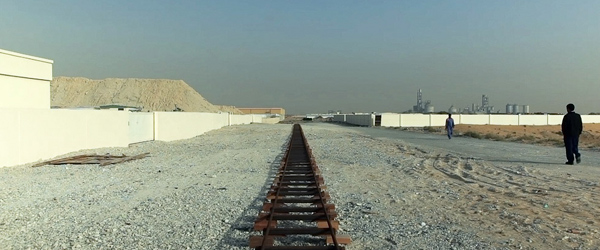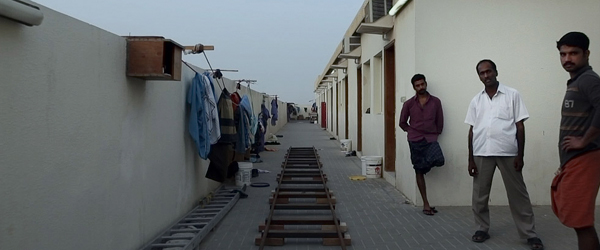Tireless Refrain
Nam June Paik Art Center Seoul • Korea [KR]A refrain is a repeated phrase inserted throughout a song or poem, which is less to do with conveying a central theme directly, but more to do with creating an image through repetition. The recurring verse is, however, meant not only to give a formal pleasure or to complement the content, but also to reveal the most political intention in the most artistic way, as in a Greek tragedy whose chorus speaks for the audience or produces a satire on characters. The title ‘Tireless Refrain’ is derived from the fact that the artist’s practice could be reminiscent of the role that the refrain plays in terms of generating politicalness simply through repetition. This exhibition aims to put together those works that seek to make a social critique by repeating and reiterating a specific act.
About Exhibition:
There are some artists who pose political questions by drawing on repetitive actions in a highly charged field, but not advocating a certain political position or rallying cry. The artist gets into a community of emigrant workers, not to fight for solving a political problem right away, but to participate in their daily activities and organize a festival for them and to intervene in trivial and miscellaneous matters of their everyday life (mixrice); ordinary objects are put forth which seemingly appear mundane but turn out to be entangled in social tragedies (Sanghee Song); the artist adopts a peaceful performance carried out in ‘Green Line,’ a borderline area between Israel and Palestine (Francis Alÿs), or a non-intermittent filmic record of a labor camp in Afghanistan by a 100-meter camera track set up over the course of eleven days (Melik Ohanian); the artist’s strategies also include paying people for doing what the artist asks to do, in which native people learn Spanish, the language they do not understand, or foreign immigrants dye hair blonde, or participants incline and shore up a gallery wall (Santiago Sierra).
Dealing with political matters, other artists choose to disclose hierarchical orders without reservation or refer to notions of power metaphorically, in a situation that does not look political at all. The aforementioned artists relate to politics, while the following artists to the political. The parody of an educational television program demonstrates the artificiality of instruction and contemporary art (Beom Kim); the entrance walls collected from different exhibitions become the artist’s work itself (Soosung Lee); physical arrangements in the gallery space contribute to exposing social absurdities (Wan Lee); the video about conditions for perfect table manners, which is edited and fast-forwarded, lays bare the hyperbole of conventions (Ana Hušman); the oppressive effect of immigration interviews is acted out in the form of church mass (Nadia Kaabi-Linke). All these works are concerned with the preconceptions that are at work unconsciously in art institutions but hard to do away with, which are made to resurface, sometimes to become a travesty, in the works of these artists.
Whether it be the penetration into politics itself, or the micropolitics of making visible the invisible power, the above artists have it in common that their being political arises from the fidelity to sensory perception. It is expected that this exhibition will show how the kind of art that is not subordinate to politics could bring in a critical perspective on realities
About Work:
French artist Melik Ohanian simultaneously explores a continuous representation of space and a discontinuous representation of time. This video was shot over a period of 11 days at a Labor Camp in Sharjah, an emirate of the United Arab Emirates. During the course of the first day, Melik Ohanian built 100 meters of tracks and filmed approximately four minutes of traveling shots while passing over the tracks. The next day, he disassembled the tracks, moved them forward 100 meters, re-assembled them, and filmed again. He repeated this process for 11 days, shooting both during the day and at night. At a glance, the video appears to be a purely artistic, formal experiment. However, the members of this Labor Camp are largely immigrant workers facing low wages, grueling work conditions, and a disregard for human rights, usually in connection with large-scale art projects such as the construction of the Louvre Abu Dhabi. This work, which was produced at the request of the Sharjah Biennale, was denied screening at the Biennale due to somewhat hazy reasons, and ultimately could not be projected in normal way. The production’s backstory and the odd anecdotal parallel that the artist observed—the parallel between the rhythm of the production staff and the rhythm of the laborers—produce the image of an absurd reality explicitly revealing itself through the aesthetic formal experiment. The laborers’ image, in which they become the subject of the work and in which they are exploited for art institutions, distinctly illustrates the gap between the ideology of art and the reality of art institutions.
Artist / Beom Kim(Korea), Mixrice(Korea), Sanghee Song(Korea), Santiage Sierra(Spain), Francis Alÿs(Belgium), Melik Ohanian(France), Soosung Lee(Korea), Wan Lee (Korea), Nadia Kaabi-Linke(Tunisia), Ana Hušman(Croatia)
more infos

